Weekly Recap
Indices in the US and Europe hit fresh record highs last week, and the US dollar tumbled to a 14-month low as risk sentiment received a boost from data supporting more Fed rate cuts and China stimulus. Chinese equities surged by over 15%, making the best weekly performance since 2008, while the Hang Seng booked its best weekly performance since 1998.
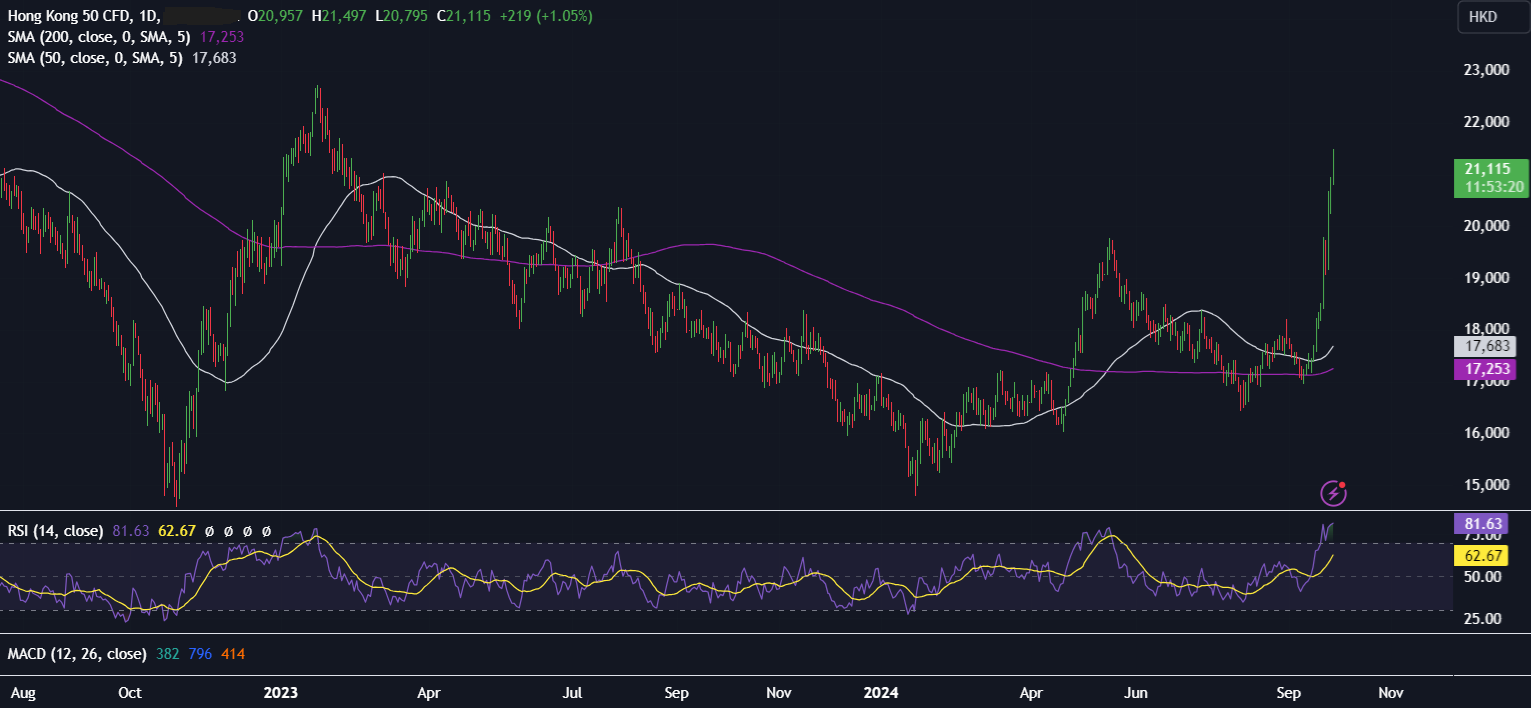
Chinese equities surged after Beijing launched a vast economic stimulus package, including a $114 billion chest to boost the stock market.
Beijing unveiled its most extensive stimulus package since the global financial crisis came a week after the Fed cut interest rates by a bumper 50 basis points. The prospect of looser monetary policy in the world’s two largest economies has been a boon for equities and industrial metals. Precious metal Gold also rose to a new record high.
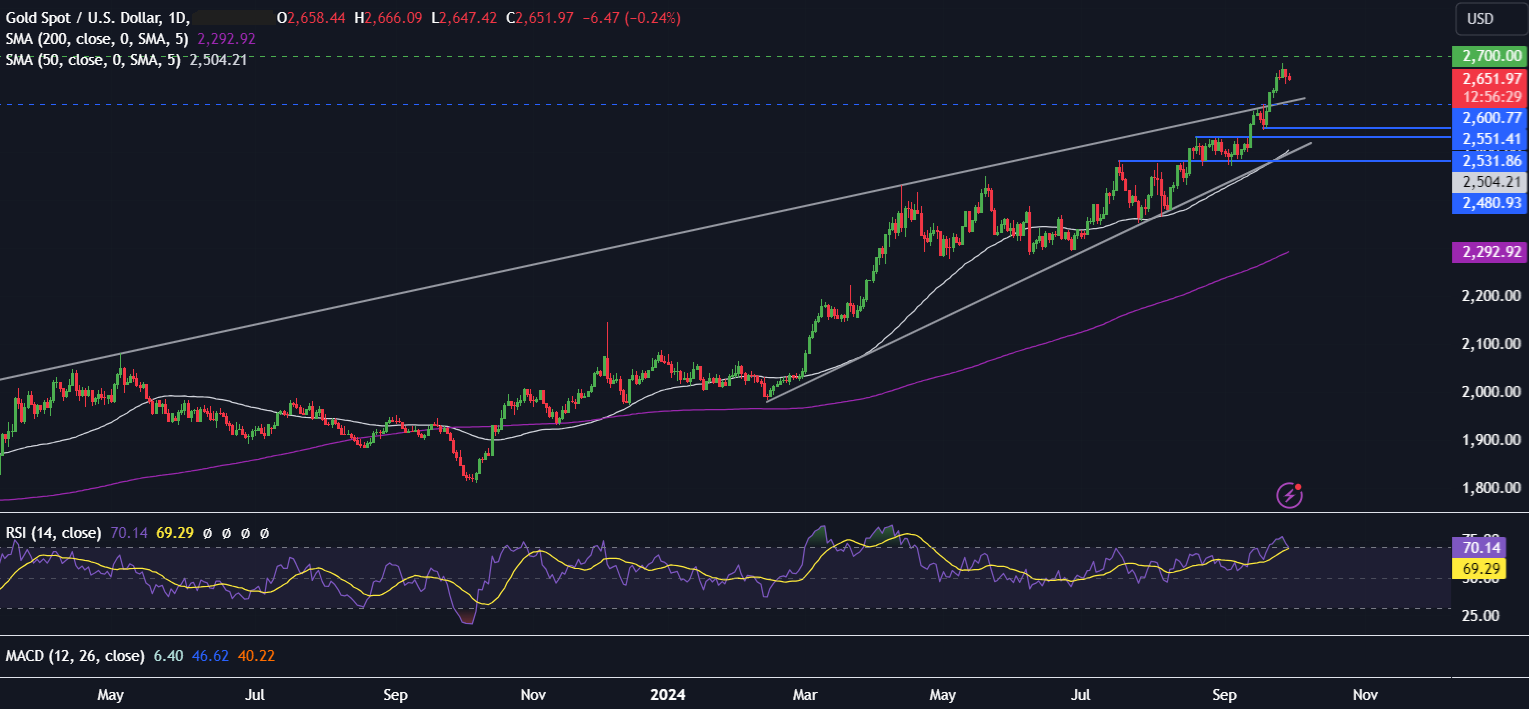
Week Ahead
Fed Chair Powell speaks
After the Federal Reserve cut interest rates by 50 basis points earlier in the month, the market will scrutinize comments from Federal Reserve chair Jerome Powell as he speaks at the National Association for Business Economics conference on Monday for clues over whether the Fed cut rates by a further 50 basis points in the November meeting. The market is currently pricing in a 50% probability of another outsized rate cut. However, data across the week is more likely to provide more insight.
US ISM manufacturing & services
The US ISM manufacturing PMI, which will be released on Tuesday, October 1st, and the non-farm payroll report, which is due on Friday, will be the most important economic releases this week.
The US manufacturing PMI is expected to come in at 47.5, up modestly from 47.2 in August but still below the 50 level that separates expansion from contraction. The data comes as the S&P global PMI last week showed the manufacturing index falling further into contraction. However, given the recent focus on global growth following the Fed and the PBoC decisions, the market may be OK with a softer number.
The new orders subcomponent will be the one to watch, as it will be the first to respond to recent developments. The employment subcomponent will also be in focus ahead of Friday’s nonfarm payroll.
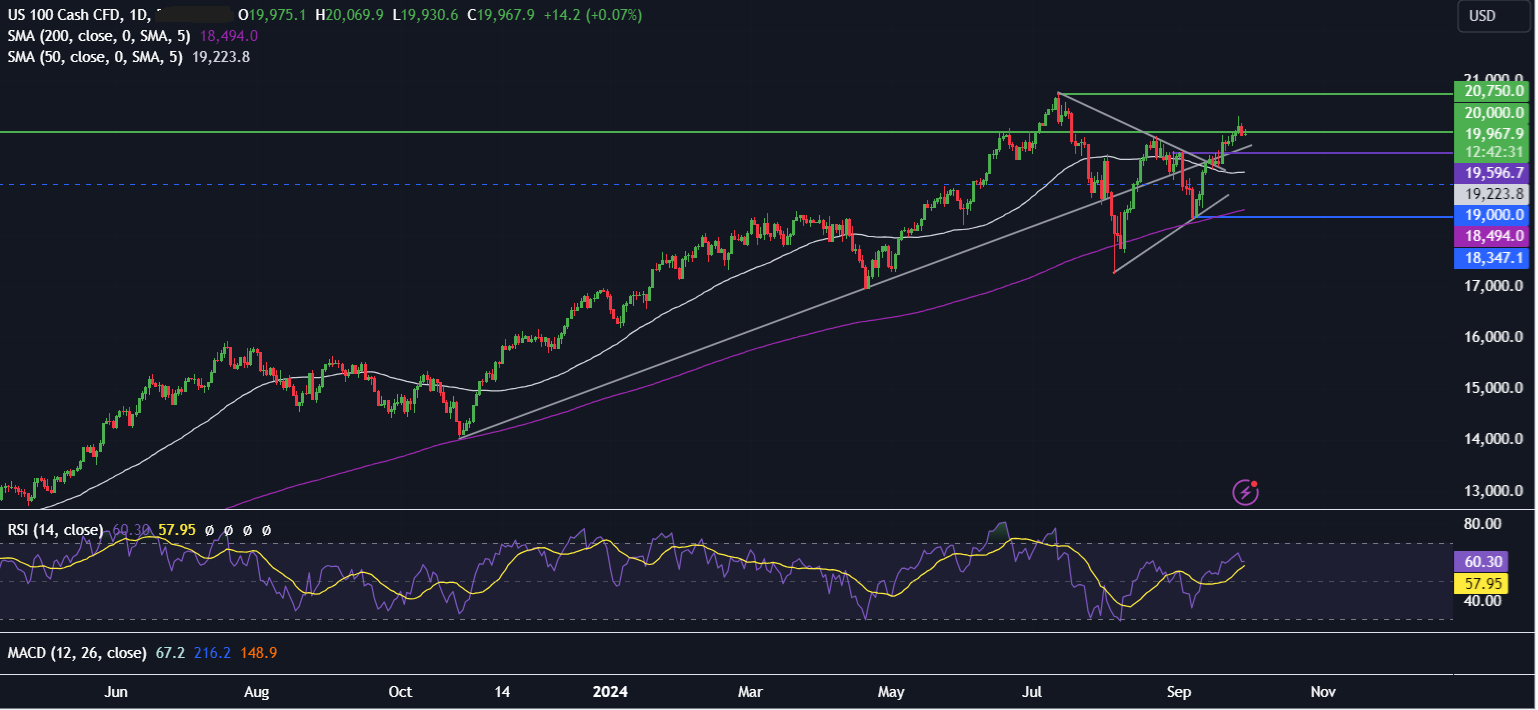
NFP report
The US non-farm payroll report is expected to show that 146,000 jobs were created in September, roughly in line with August’s reading. Meanwhile, the unemployment rate is expected to remain unchanged at 4.2%, and average eye earnings are expected to remain at 3.8%, unchanged from the previous month.
Federal Reserve forecasts a 4.4% unemployment rate by the end of the year with 50 basis points worth of easing. The unemployment rate has been rising amid an increase in labour supply rather than more job layoffs, as seen in jobless claims figures that have remained in a range of 200k to 260k since 2022.
A weak non-farm payroll report could see the market increase expectations for a 50 basis point rate cut in November. If the reading is too weak, it could raise concerns of a recession, and the USD and stocks could drop sharply. However, a modest miss could still benefit stocks, supporting the view that the US is on track for a soft landing and the Fed will continue cutting rates.
Of course, the opposite is true. If the nonfarm payroll report came in hotter than expected, then 25 basis points would be the most likely decision from the Fed. This could see the USD gain ground. However, stocks may also be boosted by the prospect of a soft landing.
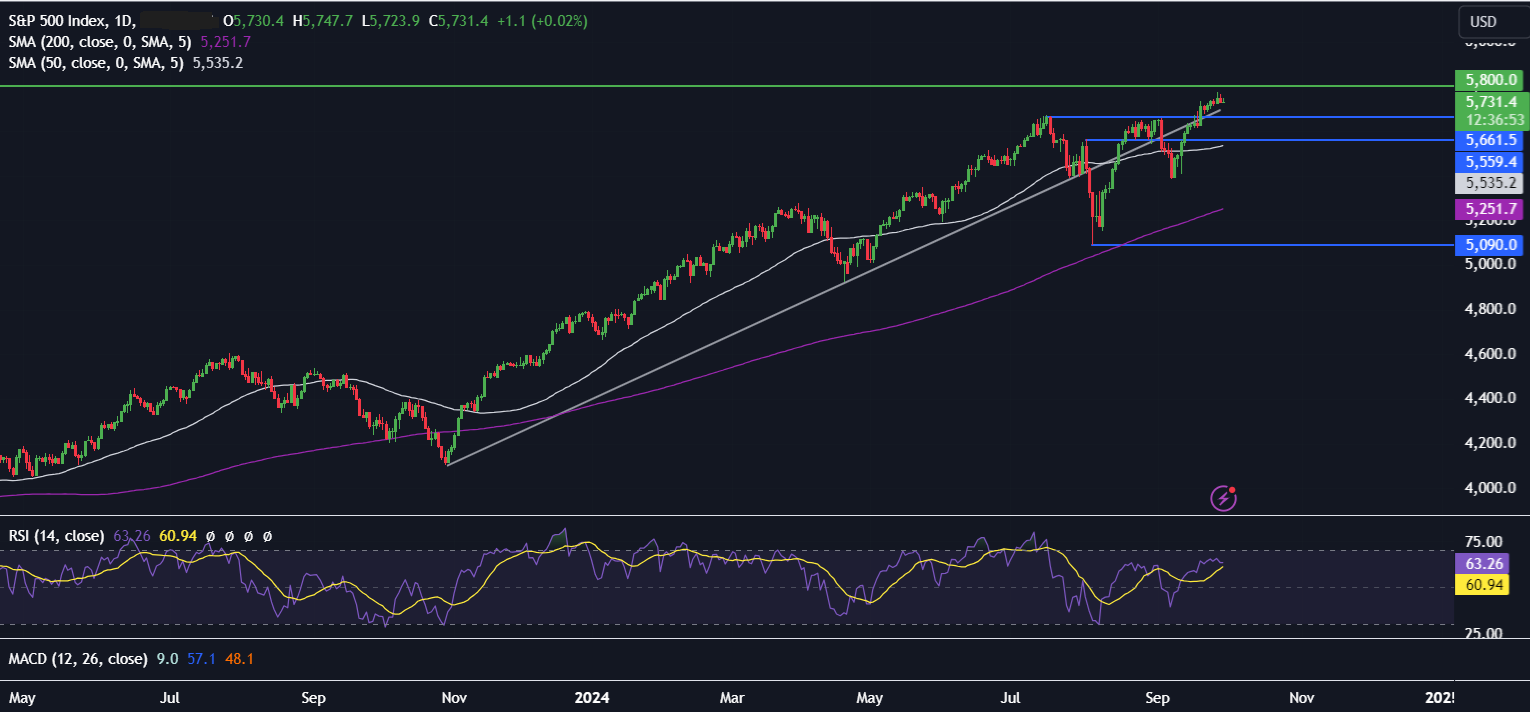
USD/JPY
USD/JPY was one of the big movers on Friday, with the new hawkish Japanese Prime Minister and soft US core PCE inflation sending the pair sharply lower.
While several medium-tier Japanese data releases are scheduled, the US NFP report is likely to be a significant driver of the pair. Realistically, it would take the US unemployment rate to decline for investors to pair back 50 basis point rate cut expectations, which could support USD/JPY. Otherwise, the direction of least resistance appears to be downwards.
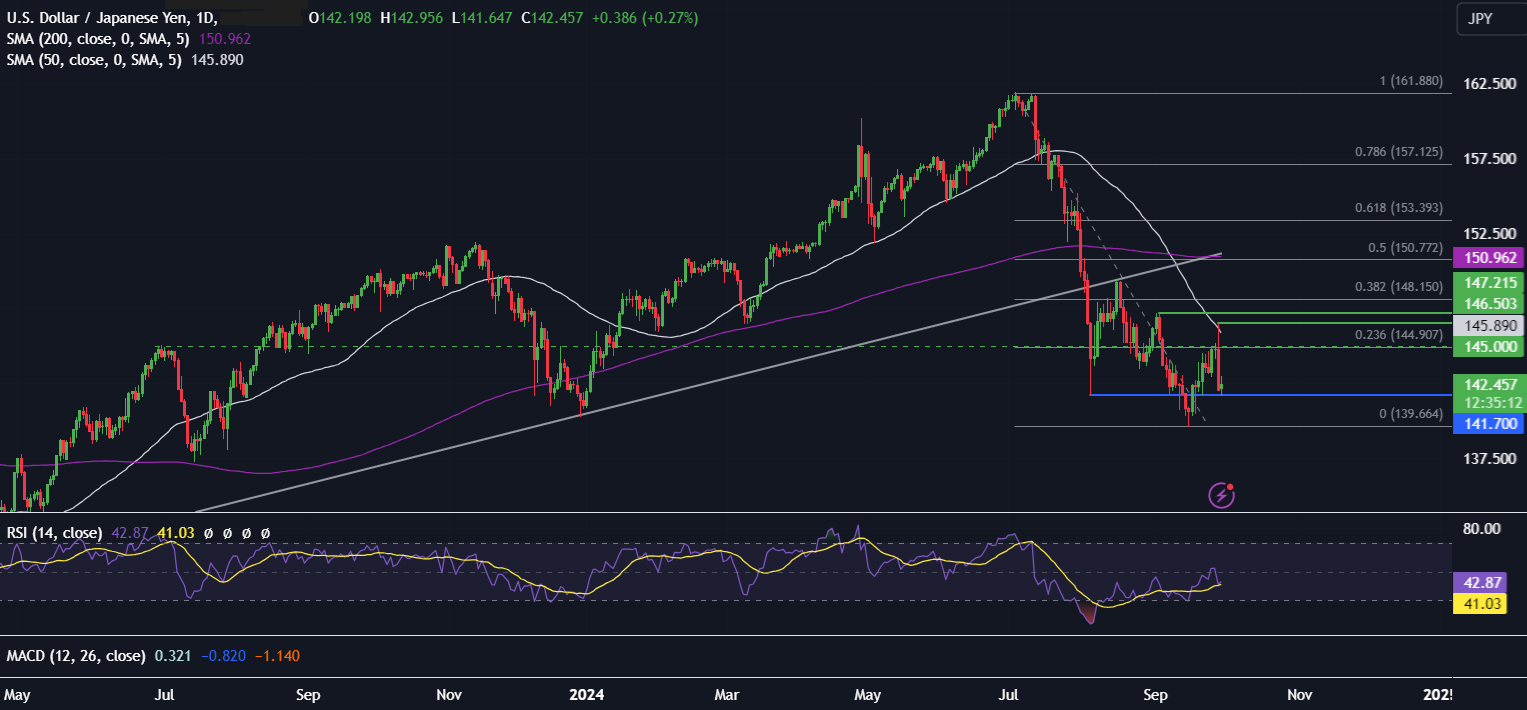
Eurozone inflation
On Tuesday, Eurozone inflation, as measured by the CPI, is expected to ease to 1.9% YoY in September, down from 2.2% in August. Meanwhile, core CPE is expected to remain unchanged at 2.8%. The data comes as the market is already pricing in a back-to-back 25 basis point rate cut in October following September’s disappointing PMI data and soft French and Spanish inflation figures last week. The ECB cut interest rates by 25 basis points in the September meeting and is expected to cut by 25 basis points at each meeting until June 2025. Weaker-than-expected eurozone inflation data could prompt an even more aggressive rate-cutting cycle from the ECB, pulling the EUR lower.
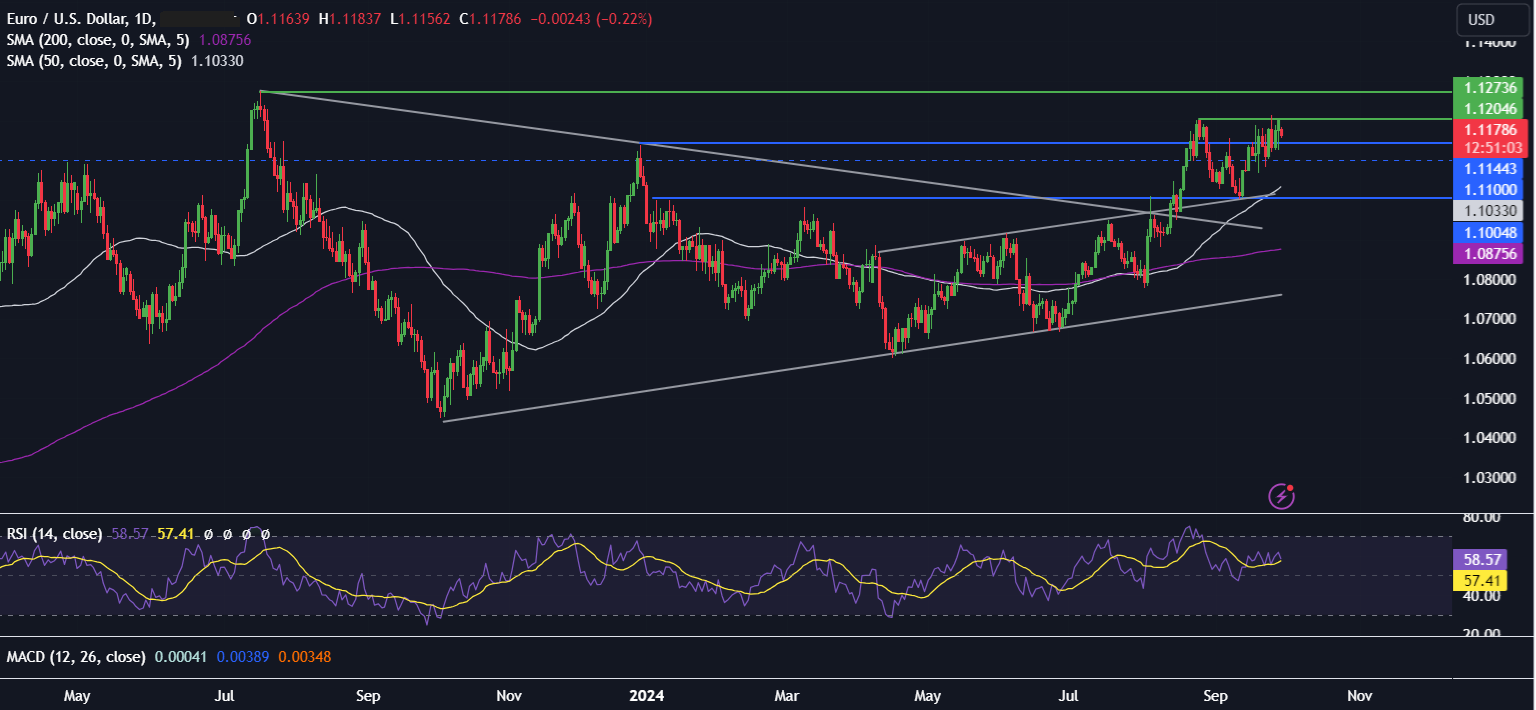
OPEC JMMC meeting
While almost anything China-related surged last week, oil was a standout exception, falling over 5% across the week. Oil prices sunk as both OPEC+ is expected to start its scheduled 180,000 barrel-a-day production hike in early December. The policy was pushed back two months from its original October start. Meanwhile, Saudi Arabia abandoned the $100 price target, and Libya moved forward with the deal to boost production.
All eyes are on the OPEC JMMC meeting, which is expected to take place on Wednesday and could provide more clarity on the oil market’s direction from both the supply and the demand side.
In addition to the OPEC meeting, attention will be on China’s PMI data, released just before the country’s week-long holiday. However, given last week’s stimulus announcement, the data might be considered out of date.
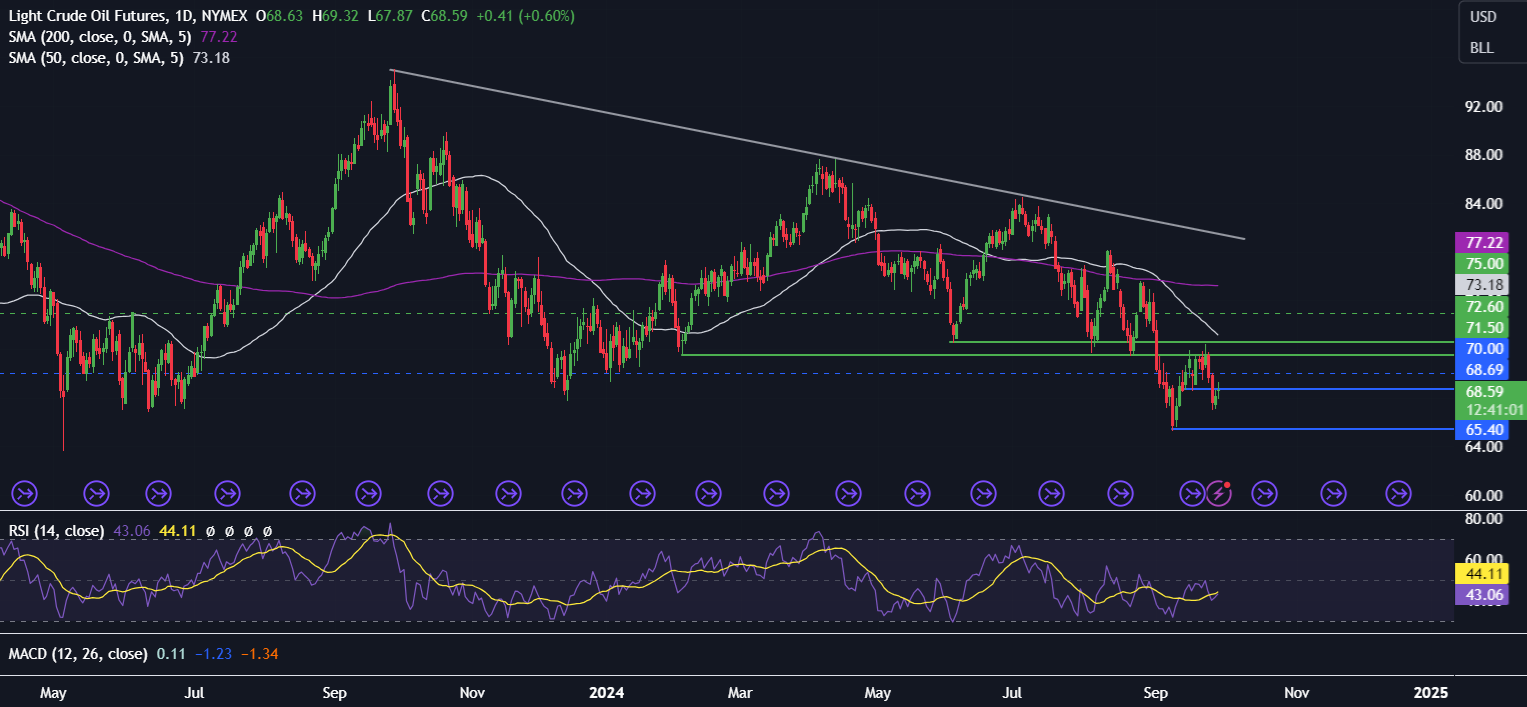
The content provided here is for informational purposes only. It is not intended as personal investment advice and does not constitute a solicitation or invitation to engage in any financial transactions, investments, or related activities. Past performance is not a reliable indicator of future results.
The financial products offered by the Company are complex and come with a high risk of losing money rapidly due to leverage. These products may not be suitable for all investors. Before engaging, you should consider whether you understand how these leveraged products work and whether you can afford the high risk of losing your money.
The Company does not accept clients from the Restricted Jurisdictions as indicated in our website/ T&C. Some services or products may not be available in your jurisdiction.
The applicable legal entity and its respective products and services depend on the client’s country of residence and the entity with which the client has established a contractual relationship during registration.




